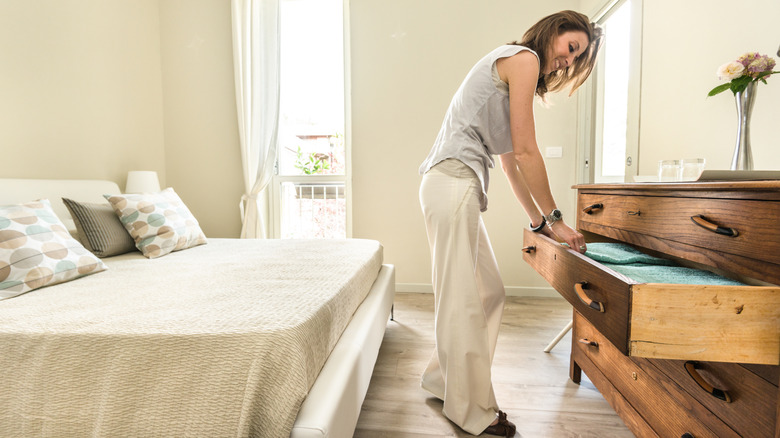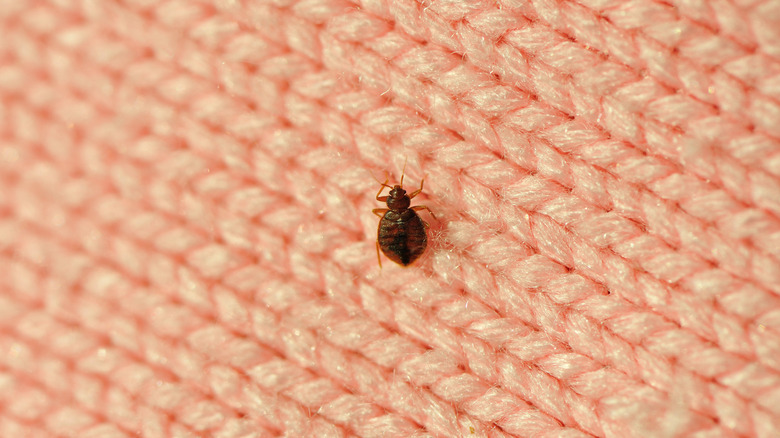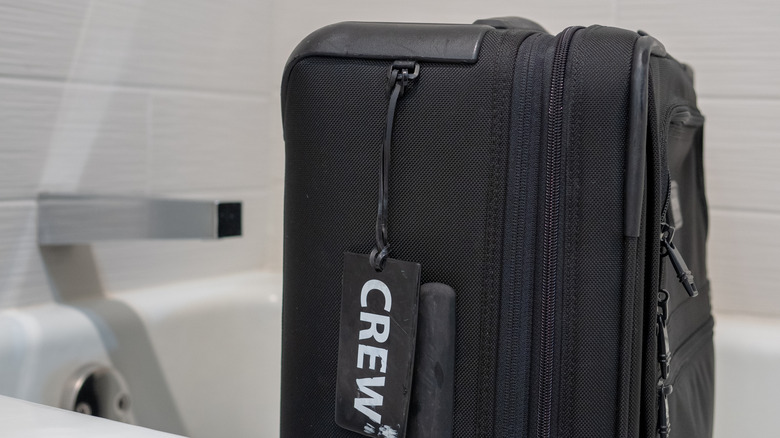The Unsettling Reason To Avoid Putting Any Of Your Belongings In A Hotel Dresser
Whether staying stateside or venturing on an international adventure, travel mishaps can easily derail even the most carefully planned vacation. From flight delays and your luggage getting lost during travel to catching a stomach bug from questionable street food, numerous things that can go wrong when you're away from home. However, nothing can ruin a trip as quickly as picking up one of the most unwanted souvenirs out there, bed bugs.
A nightmare that can take months and thousands of dollars to eliminate for good, bed bugs are small, oval-shaped insects that feed on human blood — a thought that's already horrifying enough — and spread by hitching a ride on unsuspecting travelers' belongings that have come in contact with their hiding spaces. And what tends to be one of their favorite homes? You guessed it — it's hotel dressers. Especially ones where the dark wood and teeny tiny crevices provide the perfect conditions for these unwanted guests to thrive.
Hotel dressers are a hotbed for bed bugs
Hotel dressers — especially wooden ones with lots of joints and crevices — create the perfect environment for bed bugs to hide, breed, and prepare for their version of "world domination." Plus, unlike bathrooms or bedding, hotel housekeeping rarely gives dresses the thorough cleaning they deserve after a guest passes through the room, making them even more of an ideal spot for bed bugs to feel right at home.
@drjaysonisfresh Do you completely unpack clothes into dressers?
Even worse, these little pests can survive up to a year without feeding — making them extra resilient and tough. Throw in the fact that they also tend to multiply very quickly once they find a suitable host — which, in some cases, is an unsuspecting traveler just trying to enjoy some R&R — and you're pretty much left with a recipe for disaster. When it comes to bed bugs, preventing an infestation is far easier than trying to eliminate one after it's already taken hold.
So, what can you do to protect yourself? Well, for starters, instead of hotel dressers, experts recommend keeping your clothes safely inside your suitcase or use hanging spaces when possible. Alternatively, another simple trick for keeping bed bugs out of your luggage is to put all of your belongings in the bathroom. This is because bathrooms aren't necessarily spaces where people spend that much time just ... sitting around. This, in turn, means that bed bugs aren't interested in trying to conquer the space — and you'll have a much higher chance of coming home bed bug-free.
Preventing and dealing with bed bugs
Unfortunately, the presence of bed bugs isn't obvious, making getting rid of them difficult. However, you can find clues of bed bugs by looking for things like dark stains, tiny eggs, and shed skin casings in and around your mattress. It's also worth carefully inspecting your belongings and furniture if your gut is telling you that something in your room (or back home) feels off — like a musty smell or a sudden rash on your or a family member's skin.
Once you've identified these signs, the most important thing is to act fast. And although some travelers might resort to disinfectant sprays and viral hair tool hacks to try and kill bed bugs, the reality is that nothing works as well as shelling out the big bucks to hire a professional pest control service to clear your home of these pesky invaders.
On the other hand, if you're still traveling and find bed bugs in your accommodation, immediately report it to hotel management and ask to be moved to a different room — preferably one as far away from the infested room as possible. Before moving, however, check your belongings for any signs of bed bugs, and keep your clean items in separate plastic bags. For items you might feel are contaminated, contact the hotel about washing and drying them at high heat to kill any traces. Lastly, once you're in the new room, put your stuff in the bathroom and take some time to inspect the usual suspects — mattress, chairs and sofas, drawers, and baseboards — before settling in.


